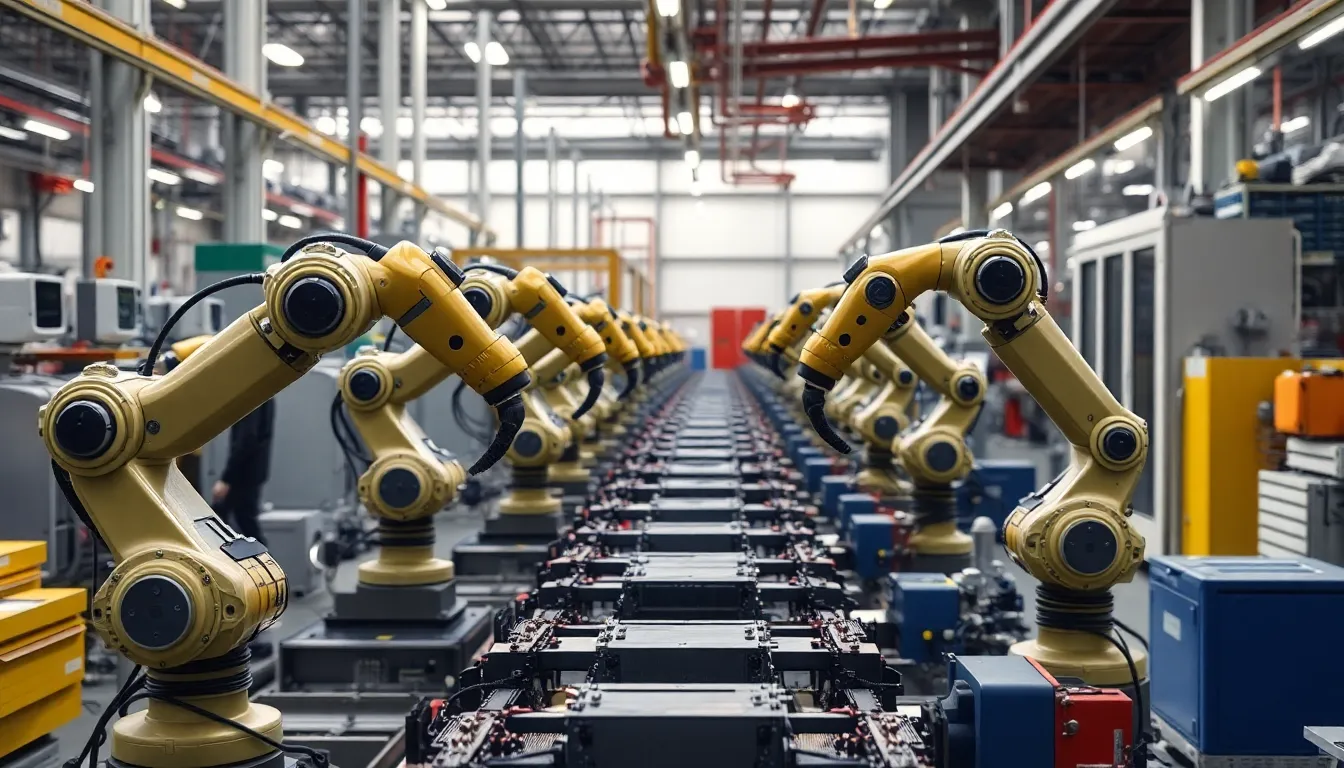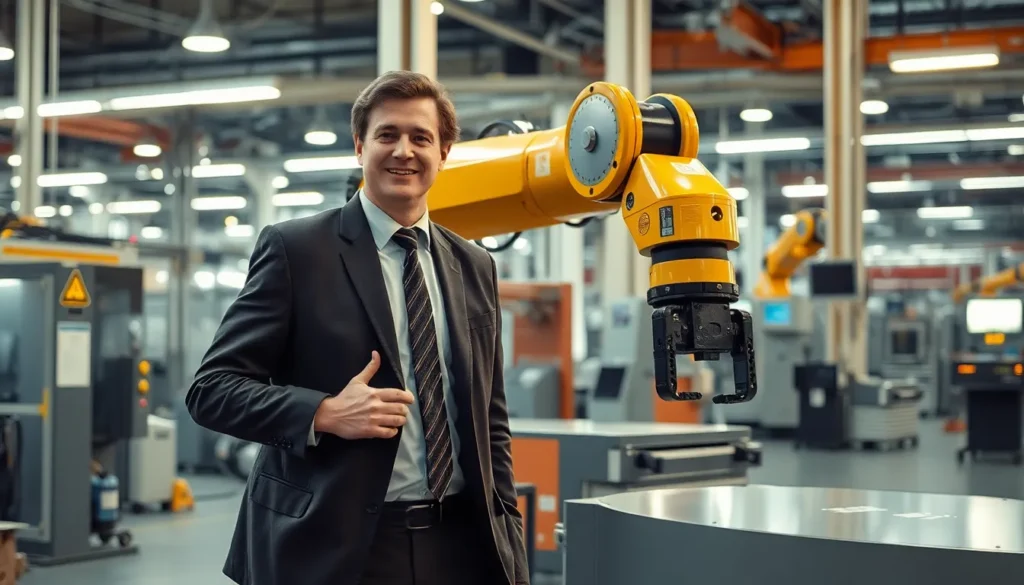Table of Contents
ToggleIn a world where even your toaster might be plotting to take over your breakfast routine, automation technology stands at the forefront of innovation. This game-changing force is transforming industries faster than you can say “robot uprising.” From smart homes that know when to brew your coffee to factories where machines work harder than a caffeinated intern, automation is revolutionizing how we live and work.
But it’s not just about replacing humans with robots; it’s about enhancing capabilities and boosting efficiency. Imagine having more time to binge-watch your favorite series while your tasks get done in the background. Automation technology is here to streamline processes, cut costs, and make life a little easier—without the awkward small talk. Buckle up as we dive into the exciting world of automation and discover how it’s reshaping our future.
Overview of Automation Technology
Automation technology encompasses various systems and processes designed to perform tasks with minimal human intervention. This technology spans several industries, including manufacturing, healthcare, and agriculture. These sectors experience notable advances in efficiency, productivity, and consistency through automation.
Robotics plays a significant role in automation technology. Robots automate repetitive and dangerous tasks, allowing workers to focus on complex activities that require critical thinking. In production environments, robotic systems enhance quality control and speed up assembly lines.
Artificial intelligence (AI) and machine learning are other vital components. These technologies analyze data, learn from patterns, and make decisions based on vast amounts of information. Machine learning algorithms can optimize processes, predict failures, and reduce downtime in various operational settings.
Smart devices illustrate another facet of automation technology. They connect to the Internet of Things (IoT) and facilitate automation in households and cities. Smart thermostats, security systems, and appliances improve energy efficiency and enhance comfort for users.
Automation technology’s integration into everyday life is growing rapidly. In logistics, automated guided vehicles streamline warehouse operations, improving inventory management and delivery times. Healthcare providers use automation for patient record management, ensuring accurate and efficient access to crucial information.
The impact of automation technology is evident in its ability to streamline operations while maintaining or enhancing quality. As businesses adopt these advanced systems, they not only improve their overall performance but also adapt to the ever-evolving market demands.
Types of Automation Technology

Automation technology encompasses various types that cater to specific industry needs. Each type optimizes processes to enhance efficiency and productivity.
Fixed or Hard Automation
Fixed or hard automation suits high-volume production settings. It employs specialized equipment designed for specific tasks, reducing flexibility. This type offers significant cost savings through economies of scale. Manufacturers often use fixed automation for repetitive tasks, such as assembly line processes. Investing in this technology is beneficial when production demands are stable.
Programmable Automation
Programmable automation provides adaptability for batch production. Operators can reconfigure systems to handle different tasks and products. It’s particularly useful in industries like food processing and pharmaceuticals, where production requirements change frequently. Programmable automation utilizes control systems that allow easy adjustments. Flexibility in programming enhances responsiveness to market demands, enabling efficient operations.
Flexible Automation
Flexible automation excels in environments requiring quick product changes. Systems configure themselves to accommodate varied products without extensive downtime. This type is ideal for manufacturers facing fluctuating demand. Implementing flexible automation allows companies to introduce new products swiftly and reduce lead times. Adopting this technology supports innovation and helps businesses maintain a competitive edge.
Benefits of Automation Technology
Automation technology brings numerous advantages to various sectors. Increased efficiency stands out prominently, allowing systems to perform tasks faster and with fewer errors. Organizations benefit from streamlined processes, reducing time spent on mundane activities. By employing automation, businesses can reallocate human resources to focus on higher-value tasks that require critical thinking and creativity.
Cost reduction represents another significant benefit. Automation technology minimizes labor costs by reducing the need for manual input. It can lead to significant savings from decreased operational expenses, especially in manufacturing settings. Organizations can invest these savings into innovation and development, ultimately enhancing their competitive edge.
Enhanced accuracy plays a critical role in automation. Automated systems consistently execute tasks with precise measurements, significantly reducing the likelihood of human error. This precision boosts product quality and improves overall customer satisfaction. Industries such as healthcare experience substantial improvements in data handling and patient record management, ensuring that critical information remains accurate and up-to-date.
Challenges in Automation Technology
Automation technology presents challenges that organizations must address to optimize their benefits. Understanding these hurdles allows for informed decisions in implementing effective systems.
Initial Investment Costs
High initial investment costs pose a major challenge for businesses adopting automation technology. Companies often face substantial expenses for equipment, software, and integration services. High upfront costs might deter small and medium enterprises from pursuing automation. Assessing long-term savings against these costs aids decision-making. In some cases, companies find financing options that make adoption more feasible.
Technological Limitations
Technological limitations can hinder the integration of automation systems. Current systems may lack the flexibility to adapt to new tasks or environments. Compatibility issues arise with integrating various technologies and platforms. Additionally, reliance on outdated software can complicate updates. Organizations need to invest in ongoing maintenance to ensure systems operate efficiently.
Workforce Impact
The workforce impact of automation technology raises significant concerns. Job displacement is a primary fear among employees in industries facing automation. Many roles become redundant as machines take over repetitive tasks. However, new opportunities also emerge in tech management and system maintenance. Reskilling initiatives help prepare workers for shifts in job demands, enhancing workforce adaptability.
Future Trends in Automation Technology
Automation technology is evolving rapidly, fueled by advancements in artificial intelligence and smart systems. These trends are set to shape future industries significantly.
Artificial Intelligence Integration
Integrating artificial intelligence into automation systems enhances decision-making and efficiency. AI-driven algorithms analyze vast datasets quickly, enabling real-time adjustments to operations. Automation processes become more adaptable, responding dynamically to changing conditions. Machine learning allows systems to improve performance over time through continuous data analysis. Companies leveraging AI integration report reductions in operational costs, further highlighting the trend’s impact on profitability and productivity.
Smart Automation Systems
Smart automation systems represent the next frontier in efficiency and connectivity. These systems utilize cloud technology to facilitate seamless integration across devices and platforms. Leveraging the Internet of Things, organizations enhance communication between machines and operational processes. Data gathered from smart automation systems improves workflow optimization and resource allocation. Features like predictive maintenance help prevent downtime, enhancing system reliability. The increased focus on energy efficiency and sustainability drives further innovation in these smart solutions.
Automation technology is reshaping the landscape of various industries by enhancing efficiency and productivity. Its integration into everyday life not only simplifies tasks but also empowers workers to focus on more complex challenges. While the benefits are significant, including cost reduction and improved accuracy, organizations must address the challenges that come with adoption.
Future trends indicate that advancements in artificial intelligence and smart systems will further drive innovation and efficiency. As companies continue to embrace these technologies, the potential for improved operational performance and sustainability grows. Embracing automation is not just about keeping up; it’s about leading the way into a more efficient and productive future.







